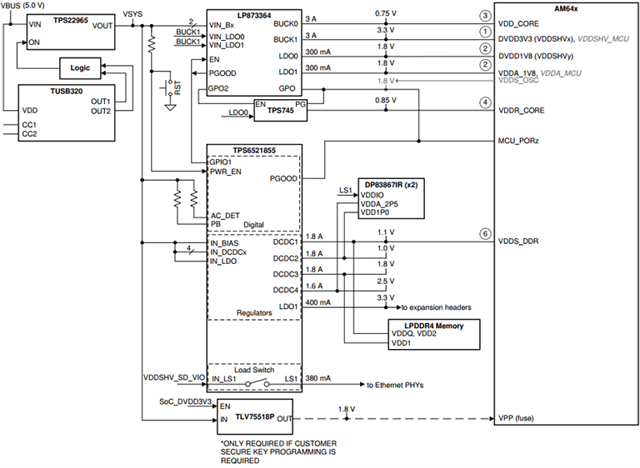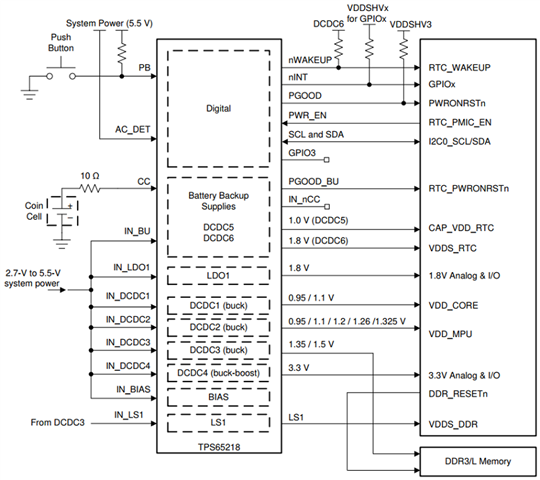Other Parts Discussed in Thread: TPS65218, TPS51206, TPS6521815
Hi TI.
There's a question that customer wants to clarify.
TPS6521855 is used for SK-AM64 EVM as below.
Is it possible to use TPS6521855 with DDR4 instead of LPDDR4?
Customer considers to use DDR4 due to performance issue if DDR4 has better performance.
If it's not sufficient for DDR4, What could be recommended for DDR4 design.
Thanks.



